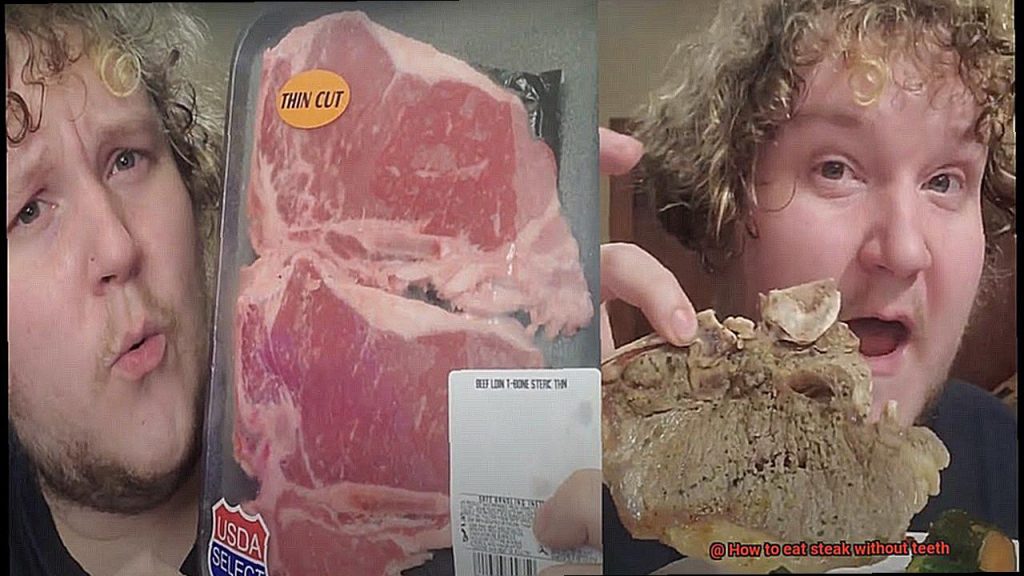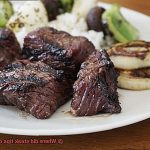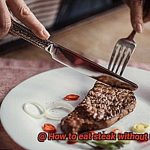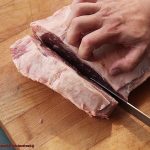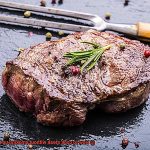Do you crave a mouthwatering steak, but struggle to enjoy it due to missing teeth? You’re not alone. Whether it’s age or dental issues, many people find it challenging to chew and savor their favorite foods. But fear not, there are ways to indulge in a steak without teeth. In this post, we’ll explore everything you need to know about how to eat steak without teeth.
First things first – let’s debunk a common myth. You don’t actually need teeth to enjoy steak. While teeth make the process easier, there are several techniques and tools that can help you cut, prepare, and relish your steak. From selecting the right cuts of meat to adjusting your cooking methods, we’ll dive deep into the art of steak-eating without teeth.
Moreover, we’ll also introduce you to various utensils and accessories that can enhance your dining experience. For instance, specialized forks and spoons designed for people with limited dental mobility or steak knives that require less effort to use.
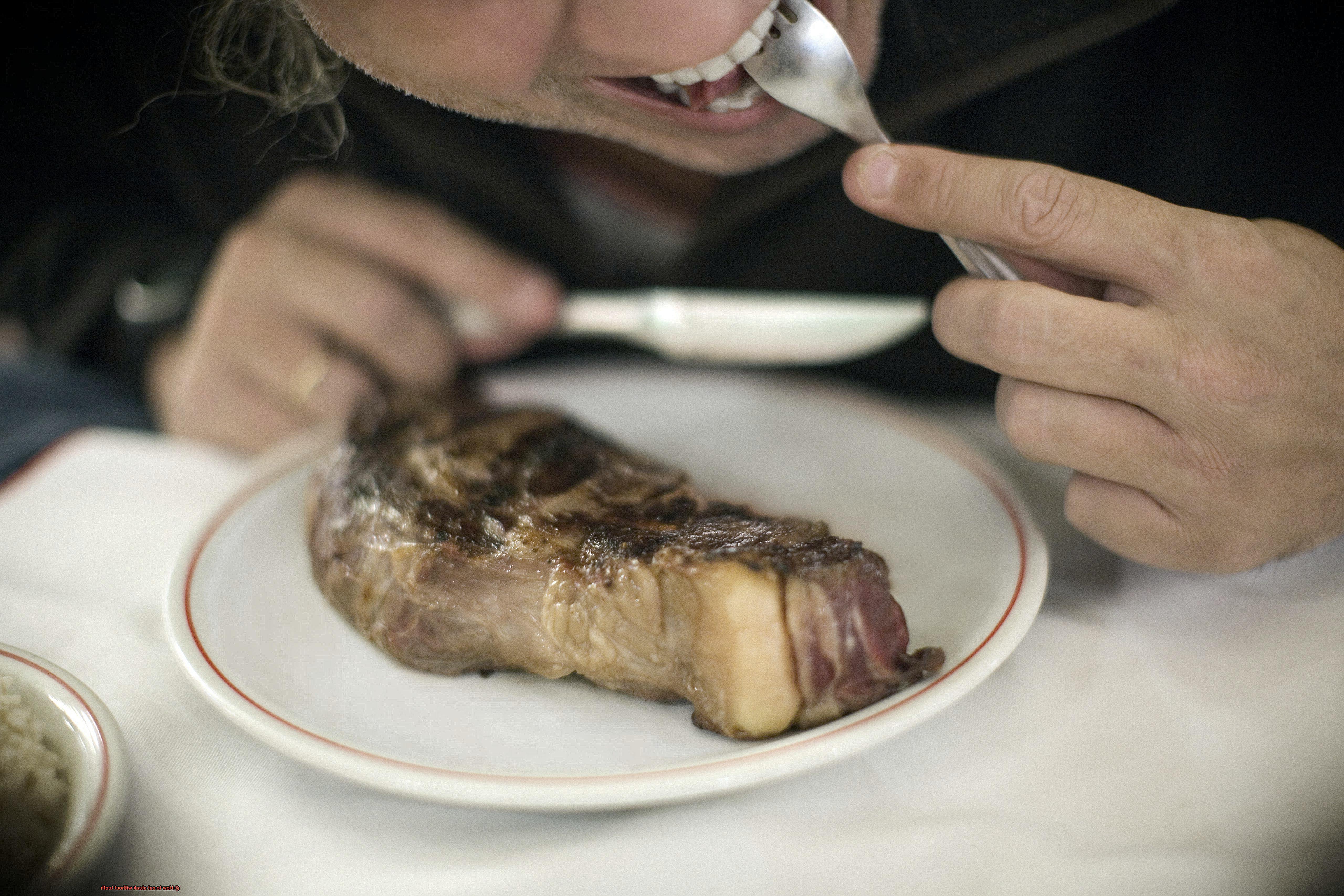
Whether you’re a die-hard steak lover facing dental issues or just curious about alternative eating methods, this guide has got you covered. So let’s get started and discover the best ways to enjoy a juicy, succulent steak without teeth.
Contents
Choosing the Right Type of Steak
Choosing the right cut of steak is crucial when it comes to texture and tenderness, making it a breeze to savor all the flavors without any difficulty chewing or swallowing.
The best option for those without teeth is filet mignon. This cut is known for its buttery texture and tenderness, making it an excellent choice for those who want to enjoy steak without any hassle. Other good options include ribeye and sirloin steaks, which are also flavorful and tender.
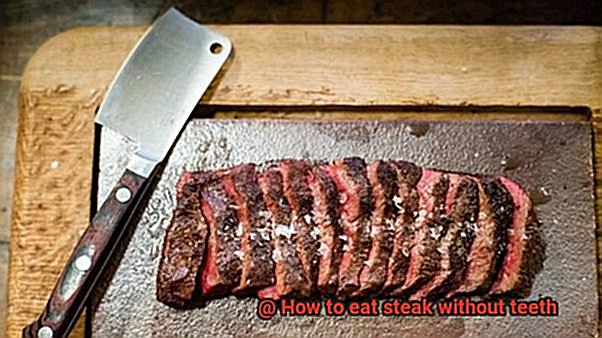
However, tougher cuts like flank or skirt steak should be avoided as they can be difficult to chew and swallow without teeth. Also, marbling – the amount of fat within the meat – can impact how easy it is to eat. Choosing a steak with more marbling can help make it more tender and easier to eat.
When selecting your steak, look for visible veins of fat running through the meat as this indicates a well-marbled cut. Your local butcher can give recommendations on cuts that are especially tender and easy to eat without teeth.
But wait, there’s more. If you’re still unsure about which type of steak to choose, there are methods you can use to make any cut easier to eat. Cutting the meat into small pieces or using a meat tenderizer or mallet can help soften the texture. Slow cooking or sous vide preparation can also result in a more tender texture.
Using a Food Processor or Blender to Puree the Meat
Don’t let that stop you from indulging in a juicy, succulent steak. Using a food processor or blender to puree the meat is a solution that allows you to enjoy the taste and nutrition of steak without teeth.
To get started, choosing the right cut of meat is crucial. Tender cuts like filet mignon, ribeye, and sirloin steaks are ideal for this method. Tougher cuts like flank or skirt steak won’t blend as easily and could result in a grainy texture.
The process itself is simple. First, cut the cooked steak into small chunks and place them into a food processor or blender. Adding some liquid to the food processor or blender, such as beef broth, chicken broth, or water, will ensure the meat blends smoothly. The amount of liquid needed will vary depending on the amount of meat being pureed and the desired consistency.
Next, blend the meat until it reaches a smooth and easy-to-eat consistency. Once the meat has been blended to your liking, it can be eaten as is or used in recipes such as soups or stews. Keep in mind that pureed meat may not have the same texture or flavor as a traditional steak, but it can provide a similar taste experience.
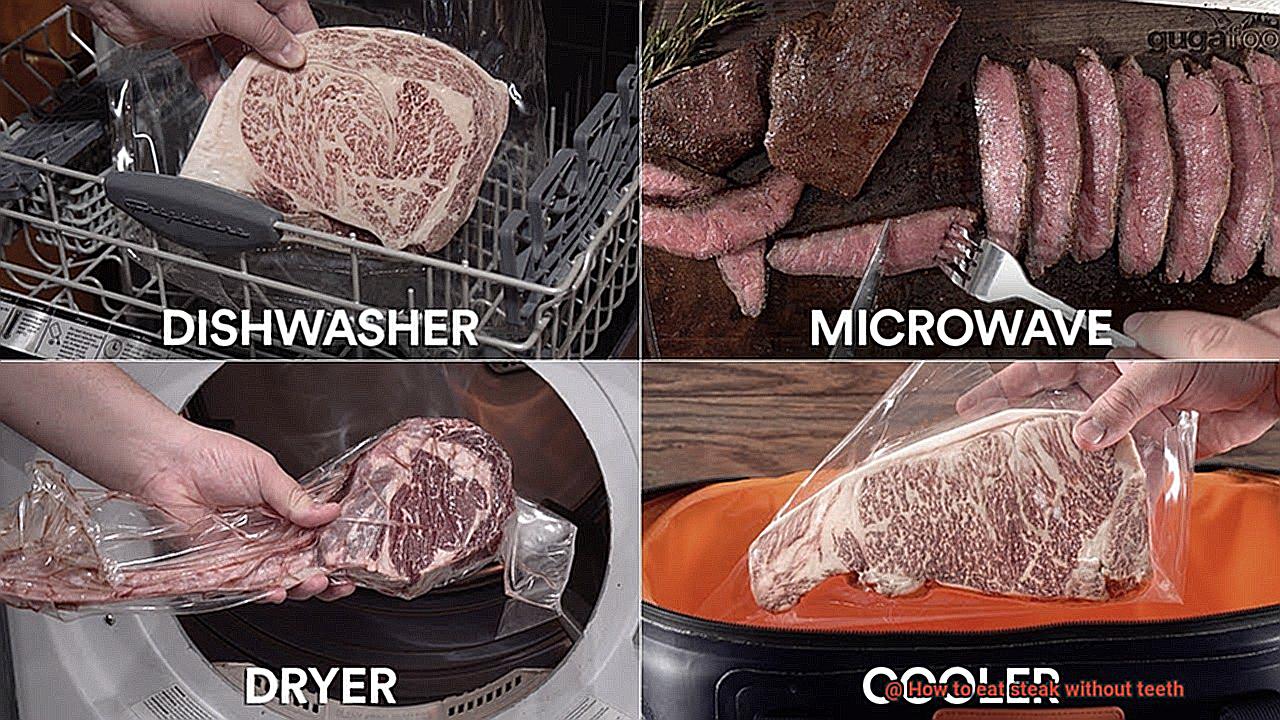
Cutting the Steak into Bite-Sized Pieces and Grinding with Molars
Don’t worry, you can still enjoy a juicy and delicious steak without teeth by cutting it into bite-sized pieces and grinding it with your molars. This innovative technique will allow you to relish the taste and nutrition of tender cuts like filet mignon, ribeye, and sirloin steaks. Let’s dive into the details of this method.
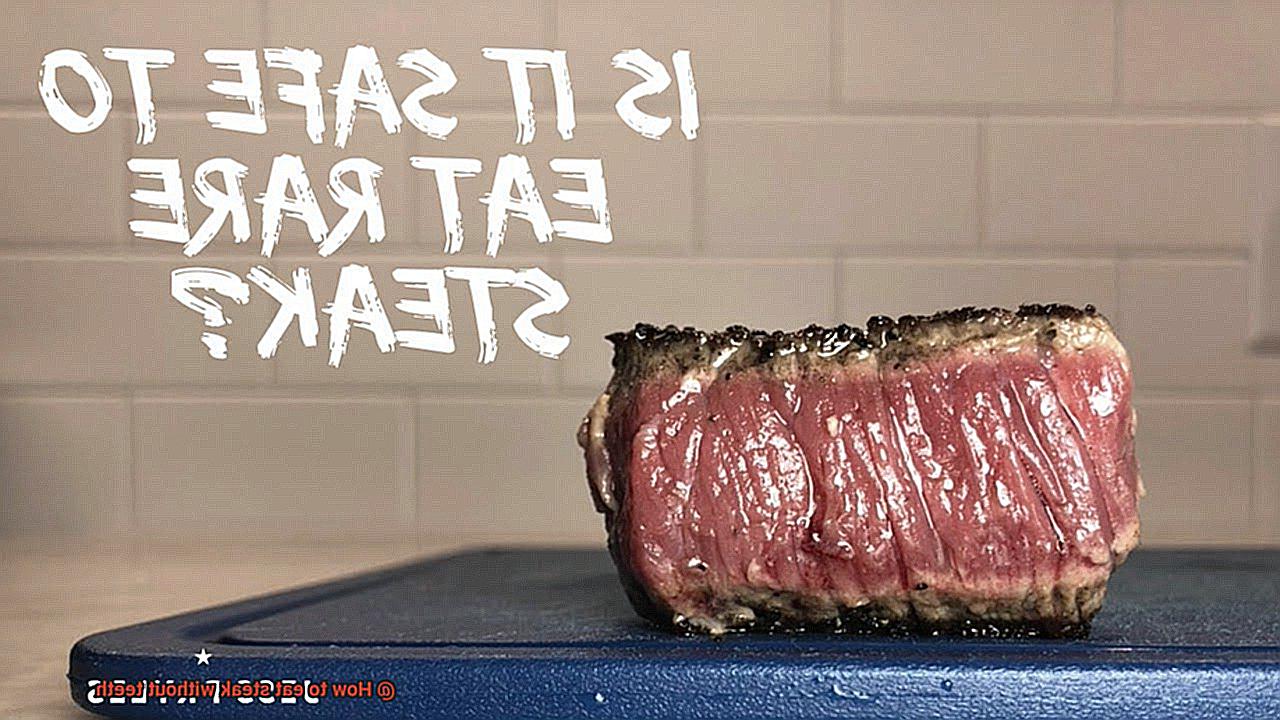
To start, it’s crucial to cut the steak into small, manageable pieces that can be chewed with the molars in the back of your mouth. This step is necessary to avoid any choking hazards or discomfort while eating. A sharp knife can come in handy for this task.
Once you’ve cut your steak into bite-sized pieces, it’s time to grind it with your molars. Grinding the steak with your molars will further break down the meat, making it easier to chew and swallow. This technique might take some practice, especially for those who aren’t used to chewing without their front teeth.
It’s essential to take small bites and chew slowly while grinding the steak with your molars. This will prevent any discomfort or potential hazards while eating. Additionally, make sure to rinse your mouth thoroughly after eating to avoid any food particles between your teeth.
In summary, cutting the steak into bite-sized pieces and grinding it with molars is a fantastic way to enjoy a delicious steak meal without teeth. With patience and practice, you’ll master this technique and enjoy your meal like before.
Pounding the Steak with a Tenderizer or Mallet
The solution to your problem is simple and easy – pounding your steak with a tenderizer or mallet. As an expert on this subject, I’m here to guide you through the process of making your steak more tender and enjoyable.
To begin, choose a meat tenderizer or mallet that feels comfortable in your hand and is easy to use. Place your steak on a cutting board and cover it with plastic wrap or parchment paper to keep it clean and prevent it from sticking to the tenderizer.
Using the flat side of your tenderizer or mallet, gently pound the steak until it is evenly flattened to about 1/4 inch thickness. Don’t overdo it, as this can result in tough and chewy meat – no one wants that.
Once your steak is pounded, add your desired seasonings and spices before cooking it according to your preferred method. Whether you prefer grilling, pan-searing, or broiling, the thinner size of the pounded steak will allow for faster cooking times.
After cooking, let your steak rest for a few minutes before slicing against the grain. This will ensure that your meat stays juicy and tender for maximum satisfaction.
Cooking in a Slow Cooker or Sous Vide
You don’t have to give up on your love for steak just yet. There’s a game-changing solution that will have you savoring the succulent taste of steak once again. Introducing cooking in a slow cooker or sous vide.
Let’s start with slow cooking. It’s like a sculptor chiseling away at stone to create a masterpiece. Cooking the meat at a low temperature for an extended period allows it to become incredibly tender and easy to chew. The low heat breaks down the connective tissue in the meat, leaving you with fall-apart tender texture. This method is perfect for tougher cuts of meat, such as chuck or brisket, but can also be used for steak.
Now, onto sous vide. It’s like putting your steak in a spa for a relaxing soak. First, seal the steak in a vacuum-sealed bag and then cook it in a water bath at a precise temperature. This method ensures that the steak is cooked evenly and retains its moisture, resulting in a tender and juicy texture that will melt in your mouth. Although sous vide machines can be expensive, there are affordable alternatives such as using a large pot and thermometer.
Both slow cooking and sous vide are excellent options for those who may struggle with traditional steak cuts due to dental issues or other reasons. It’s like unlocking the secret to enjoying steak without teeth. While these methods may take longer than traditional grilling or pan-searing, the end result is well worth the wait. So go ahead, get creative with your seasoning, and let your slow cooker or sous vide do the rest.
Plant-Based Alternatives for Those Who Don’t Eat Meat
You’re in luck. There are plenty of plant-based alternatives that can satisfy your cravings. Just like slow cooking and sous vide methods can create a juicy steak, plant-based alternatives can also provide a similar experience.
Tofu is a popular option for those looking for a meaty texture. Made from soybeans, tofu can be seasoned and cooked in a variety of ways. Whether you want to pan-fry it with some garlic and herbs or marinate it in BBQ sauce and grill it, tofu is a versatile option that can be tailored to your preferences.
Seitan, made from wheat protein, has a chewy texture similar to meat. When marinated and grilled or baked, seitan provides a delicious substitute for steak without compromising on flavor or texture.
If you prefer natural options, mushrooms are an excellent alternative to steak. Portobello mushrooms have a meaty texture that can be grilled or roasted to perfection.
Jackfruit has become increasingly popular as an alternative to meat due to its stringy texture and ability to absorb flavors. When slow-cooked or roasted with your favorite steak seasonings, jackfruit provides a satisfying and delicious meat-free meal.
Incorporating these plant-based alternatives into your meals can provide a satisfying and delicious steak-like experience without compromising your dietary choices.
3UtM5q93JYA” >
Conclusion
To sum up, don’t let missing teeth or dental issues stop you from relishing a mouthwatering steak. Our comprehensive guide has explored several techniques and tools to help you cut, prepare, and enjoy your favorite food without teeth.
Selecting the right cuts of meat is crucial for texture and tenderness. Tender cuts like filet mignon, ribeye, and sirloin steaks are ideal for those without teeth. Tougher cuts like flank or skirt steak should be avoided as they can be difficult to chew and swallow.
If cutting the meat into small pieces or using a meat tenderizer doesn’t work for you, pureeing the steak in a blender or food processor is an excellent solution that allows you to savor all the flavors of steak without teeth.
For those who prefer natural options, mushrooms and jackfruit are excellent plant-based alternatives to steak that provide a satisfying and delicious experience.
In conclusion, with patience, practice, and the right tools and techniques at hand, anyone can indulge in a juicy, succulent steak meal without teeth.

